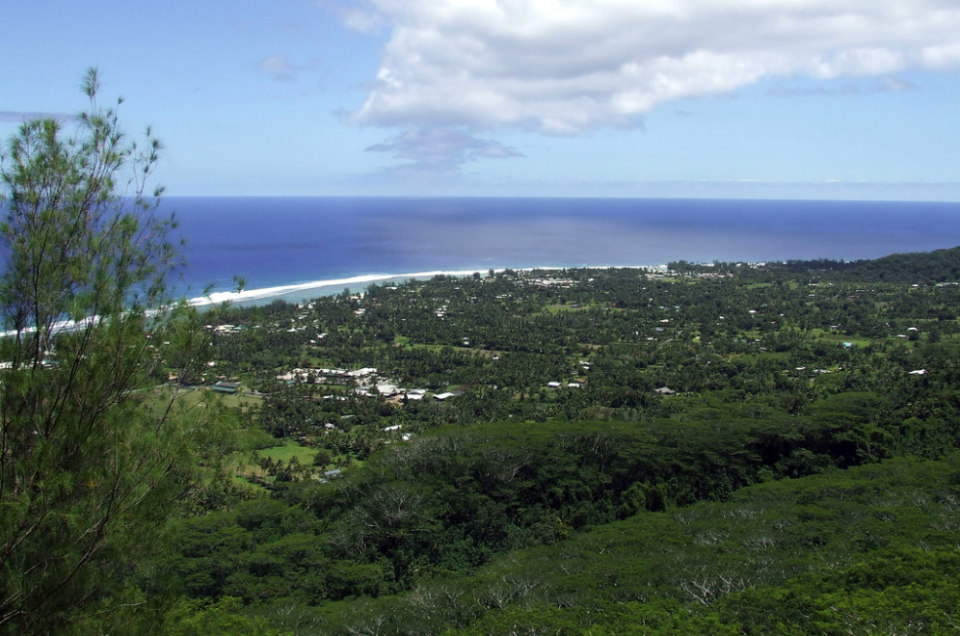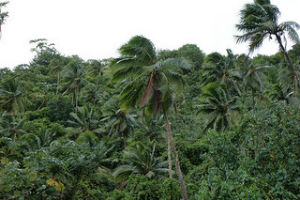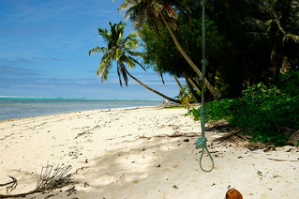The South Pacific is a storied, almost mythical place, a far-off land imbued by Broadway, the silver screen and popular memory with tall tales of brave seafarers and gauzy, almost-too-perfect images of untouched beaches, tall, swaying palm trees, and grass-skirted dancers. And while it all may seem like a dream when you arrive here, a visit to the Cook Islands is able to bring all of this to life—not as a caricatured, prefabricated version of itself, but the real deal, delivering authentic, face-to-face, hands-on experiences that must be encountered first hand to be believed.
A cluster of 15 small islands adrift in the vast Pacific Ocean, “the Cooks” offer an unhurried pace, stunning scenery, warm waters, and the opportunity to interact with local residents every single day. Sighted by Captain Cook back in 1770 (and subsequently named after him), the islands were ruled by the British and then New Zealand until they chose self-governance in 1965.
Home to fewer than 20,000 people, most of them of Maori descent and situated on the island of Rarotonga, these islands also impress with what they don’t offer—you won’t find a single fast food outlet, high-rise resort or even stoplight anywhere.
The vast majority of travellers arrive at the international airport on Rarotonga, which connects the Cooks with Los Angeles and Auckland via regular flights aboard Air New Zealand (a Star Alliance partner with Air Canada). Encircled by a single, 32 kilometer road, things on “Raro” begin to slow immediately, on the transfer to your hotel. And once you arrive at your room, things will get even slower. All resorts in the Cook Islands are small—most with just a handful of rooms, the largest with a couple dozen—meaning that the beach, the hammocks and the Mai Tais are usually just steps from your room (or less).
But while lounging on the water with a drink in your hand is never a bad idea, Rarotonga offers a surprising amount to see. A Raro Safari Tour is a great way to get an overview of things. Bouncing around the island in an open-backed jeep, these tours take visitors into places you would rarely experience on their own, navigating back roads—with gregarious local guides providing entertaining narration—to waterfalls, holy sites, a stunning mountain lookout, and the famous launch point where Maoris from here and the surrounding islands sailed seven double-hulled canoes to what we now know as New Zealand, beginning a migration that would change the history of this part of the world. The tour includes an often-humorous lesson on how to husk a coconut, and finishes with a lunch of freshly grilled tuna.
But if you’re looking for even more adventure, consider taking a ride on a four-wheeler (known around here as a “quad bike”). Plunging deep into the heart of the island, riders roar over jungle trails, splashing through more than 20 creeks and rivers, stopping along the way for short interpretive walks through the local flora and fauna. Along with exploring on foot (an option that’s also available, on Raro’s cross-island trail), these rides provide an incredible, up-close experience, an opportunity to be completely surrounded by exotic rainforest and mountains.
When you’re ready to taste some of the local flavour, take your pick of Raro’s surprising range of culinary options, from the upscale charm of the Little Polynesian Café, a romantic spot near the water that features a wide selection of local seafood, to Trader Jack’s, a Raro favourite where the food is good and diners have the option of sticking around after dinner, crowding around the open-air bar to have a frozen drink while chatting and dancing with a mixed crowd that brings together locals, expats and travellers.
And for a cultural experience that also entertains, check out Te Vara Nui. Here, you can take a walk through a traditional Maori village where costumed interpreters demonstrate time-honoured techniques of fishing, weaving, carving and drumming. But the main attraction begins later in the evening—when the sun sets and the night heats up with their Dances of Legends, an over-water show that re-enacts legendary island events with heart-pounding drums and sequences that involve sailing on rafts, spectacular fire-twirlers, traditional chants and plenty of hip-swinging dance.
While Raro is great, a trip to the Cooks wouldn’t be complete without a visit to one of the other islands. Aitutaki, connected by regular flights on Air Rarotonga, is the obvious choice.
On first sight from the air, Aitutaki causes a double-take, the main island and a handful of smaller ones situated in a shockingly blue lagoon, protected by a coral barrier reef—50 kilometers in circumference—that visibly encircles everything, separating the electric aquamarine of the lagoon from the deep blue of the wider sea beyond. If possible, the pace on Aitutaki is even slower than on Rarotonga, and all of that bright blue water, only 3 meters down at its deepest, proves to be an irresistible enticement to virtually all visitors.
Fortunately, outfits like Bishop’s Cruises provide full, relaxing days out the lagoon. A typical itinerary takes cruisers past Akaimi, the original tourist stop on the Cook Islands, where decades ago Air New Zealand planes, flying a route between Auckland, Tahiti, Bora Bora and here would stop to refuel, leaving a few passengers in their wake. After that, the small boat heads to some hidden inlets for snorkeling, then a grand finish on famous One Foot Island and its spectacular sandbar, which people around here call “the last piece of heaven on earth.” So named because of a local legend that involves father and son walking in one another’s footprints (and not because it’s shaped like a foot, as is often reported), the island conforms to most conceptions of a castaway’s paradise: a small bastion of sand and palm trees and little else, where visitors can lounge, walk the sandbar far out into the water, then come back for a drink and a very unique souvenir passport stamp (both a bar and tiny post office—with very irregular hours—stand on the island). Drink in hand, sandbar underfoot, with nothing to see but bright, blue water and those too-perfect palm trees, it all may feel like a dream, but there’s no doubt that here, you’re right in the heart of the real Polynesia.




